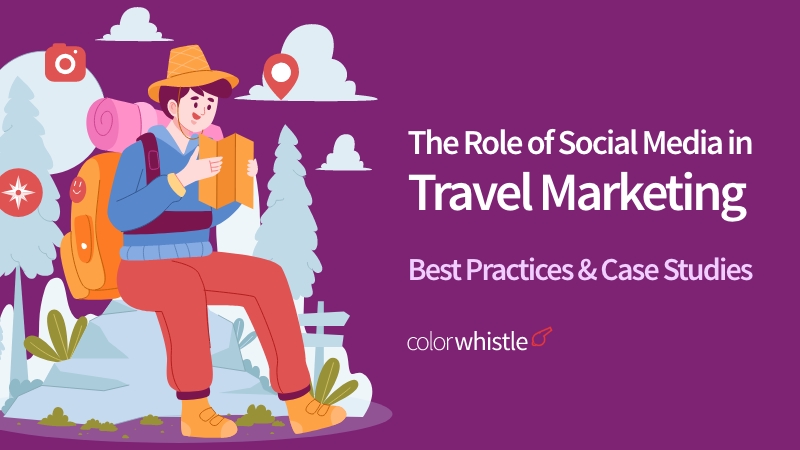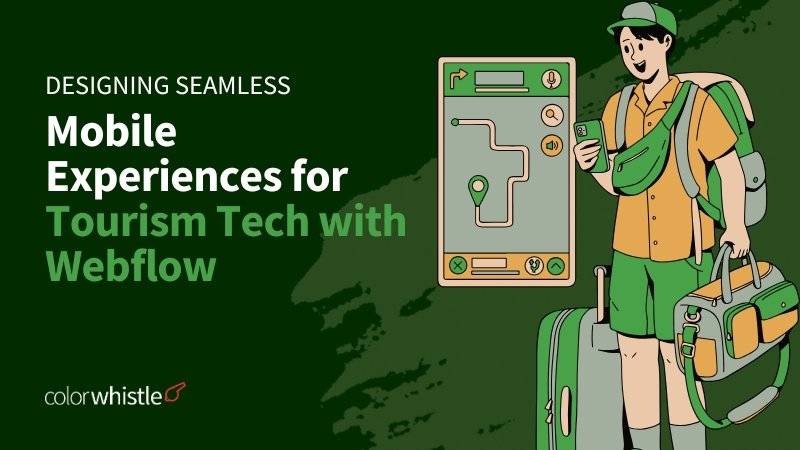In 2023, tourism boards and travel brands proved that social media isn’t just for inspiration; it drives real results. Take Accor Hotels, for example: they rolled out a campaign tapping into UGC and Instagram Reels to showcase guest experiences, boosting direct bookings by over 25%. Or look at Visit California’s “Calling All Californians” TikTok campaign, it generated millions of short videos and massive engagement, fueling travel demand across the state.
As people travel more frequently and share experiences in real time, travelers are looking not just for destinations but for stories, authenticity, and reassurance. That’s where a focused social media travel marketing service becomes crucial, helping you craft content that captures attention, builds trust, and converts scrollers into bookings.
In this blog, we’ll cover best practices and case studies from brands that are nailing it right now—showing how you can use strategy, creativity, and consistency to turn your social media into a powerful growth engine.
The Power of Social Media in Travel Marketing
- Expedia’s 2023 Traveler Value Index noted almost 35% of travelers turn to social media for holiday inspiration.
- Furthermore, 75% of respondents chose a specific destination inspired by social media as per Amex’s 2023 Global Travel Trends Report.
- Travel Live Streaming is becoming increasingly popular on social media, with 60% of travelers saying they have watched a live stream of a travel experience.
- 74% of travelers use social media while traveling, while 92% of consumers trust word of mouth and UGC more than other forms of advertising, thus making UGC on social media crucial for any travel marketing campaign.
Best Practices for Successful Social Media Travel Marketing
Top 5 things travelers use social media to research – Destinations, Hotels, Activities, Attractions, and Restaurants. Let’s list out travel marketing best practices to get the most attention from social media users.
- Choosing the Right Platforms
- Creating Engaging Content
- Building a Consistent Brand Presence
- Utilizing Paid Advertising
- Monitoring and Analytics
Key Foundations for Sustainable Social Media Growth in Travel
While a viral moment (à la Bieber in Iceland) can create a sudden spike, long-term social media success in travel marketing comes from getting the basics right. Think of these as your brand’s steady compass points:
Consistency is King
A reliable posting schedule, tailored to each platform, keeps your brand top-of-mind. Breathtaking Instagram reels, destination spotlights, or candid guest photos reshared on Facebook can create a steady rhythm that draws in a loyal, travel-hungry audience. But consistency isn’t just about posting. Timely replies and genuine engagement make travelers feel heard, often sparking organic word-of-mouth that’s more powerful than any ad.
Let Data Take the Wheel
Smart marketers don’t rely on guesswork—they let analytics guide the journey. Track engagement patterns: which posts spark shares, saves, or lively comment threads? Which ones drive booking inquiries or inspire reviews? Travelers’ own words in comments, mentions, and testimonials are goldmines for understanding what excites or frustrates your audience, helping you fine-tune content that resonates.
Stay Flexible and Evolve
The algorithm shifts, and so do traveler preferences (remember the rush for hidden gems and remote escapes after 2020?). Brands that last are the ones willing to experiment—adjusting ad spend, testing fresh formats, and leaning into new trends while staying rooted in their core identity. Think of it as ongoing trip planning for your social strategy: flexible, adaptable, and always audience-first.
Mastering these pillars ensures your travel brand doesn’t just chase fleeting fads. Instead, you build a resilient digital presence that adapts to changes, delights audiences, and steadily grows into a community of loyal explorers.
Choosing the Right Platforms
Identify the social media platforms that align with your target audience.
Popular Vacation Inspiration Social Platform
Demographics
Media Type
Millennials, GenZ
Highly visual
Boomers, Millennials
Moderately visual
TripAdvisor
Millennials
User Generated Content
Millennials
Extremely visual
YouTube
Boomers, Millennials, GenZ
Detailed & Informative
B2B travel marketing
Detailed & Informative
Take a que from social media strategy of Marriott Hotels. Their Instagram account features stunning photos of their hotels, while their Twitter account is more focused on sharing news and updates.
Which Social Media Platforms Deliver the Highest ROI for Travel Agencies?
When it comes to ROI, Instagram and Facebook remain the front-runners for travel marketers.
Instagram thrives on visuals and storytelling. With vibrant photos, short videos, and immersive stories, agencies can spark instant wanderlust and inspire bookings. Meta even reports that 83% of users discover travel services on Instagram, proof of how powerful the platform is for visibility and conversions.
Facebook, on the other hand, wins with reach and versatility. Its broader demographics, including families and multi-generational travelers, make it ideal for promoting group tours, vacation packages, and deals. Add in robust targeting and advertising tools, and Facebook becomes a conversion machine for agencies that want precision.
Here’s the quick breakdown:
- Instagram: Best for luxury showcases, destination highlights, and sparking spontaneous travel inspiration.
- Facebook: Best for detailed offers, family/group travel, and building traveler communities.
Used together, these platforms complement each other; Instagram fuels the desire, while Facebook drives the decision. That combination is where travel agencies see the strongest returns.
Cross-Platform Promotion: Maximizing Reach and Consistency
Not all social media platforms play by the same rules. Each has its own audience quirks, content preferences, and engagement styles. The challenge for travel brands is making sure you shine on every stage, from Instagram sunsets to LinkedIn layovers, without sounding disjointed.
The key is to tailor your content while keeping your brand identity front and center:
- Instagram thrives on eye-catching visuals and bite-sized videos. Think sweeping hotel views, sunrise reels, or snackable destination highlights.
- Facebook rewards engaging storytelling and community conversations. It’s ideal for in-depth travel guides, behind-the-scenes posts, and guest reviews.
- LinkedIn caters to professionals, making it the perfect place to share industry insights, thought leadership, or highlight corporate travel services.
Consistency ties this multi-platform approach together. Use cohesive visual elements (logos, fonts, and color schemes), define a brand voice (adventurous, luxurious, or playful), and ensure your messaging stays aligned across all channels.
A few smart strategies to get the most from cross-platform promotion:
- Repurpose content with intent. Share a full travel story on Facebook, then tease a striking photo or quote from it on Instagram.
- Craft platform-specific CTAs. Encourage Instagram users to “swipe for more views,” while inviting LinkedIn readers to “explore the full industry report.”
- Plan coordinated campaigns. Align launch dates and themes across platforms to create momentum and reinforce your message everywhere.
When you adapt thoughtfully instead of copying and pasting content, you expand your reach and strengthen your recognition. Done right, your social presence feels like a seamless travel experience with no misplaced layovers, just smooth connections that bring audiences closer to your brand.
Also Read
Creating Engaging Content
Invest in high-quality, visually appealing content, including photos and videos. Use storytelling techniques to capture the essence of your travel experiences.
Encourage user-generated content (UGC) by running contests or using branded hashtags. UGC refers to any content that is created and shared by users or consumers of a product, service, or brand rather than by the company or organization itself.
Travel marketers can leverage UGC in the following way:
- Display UGC on their social channels to engage other users as it signals authenticity.
- Monitoring UGC can become your informal market research to upgrade your services in-time.
- UGC also helps build employer brand which results in team retention.
Furthermore, you may leverage the new YouTube app feature that lists video recommendations according to thumbnail color. As a travel marketer, you can explore more such strategies to increase views on YouTube here.
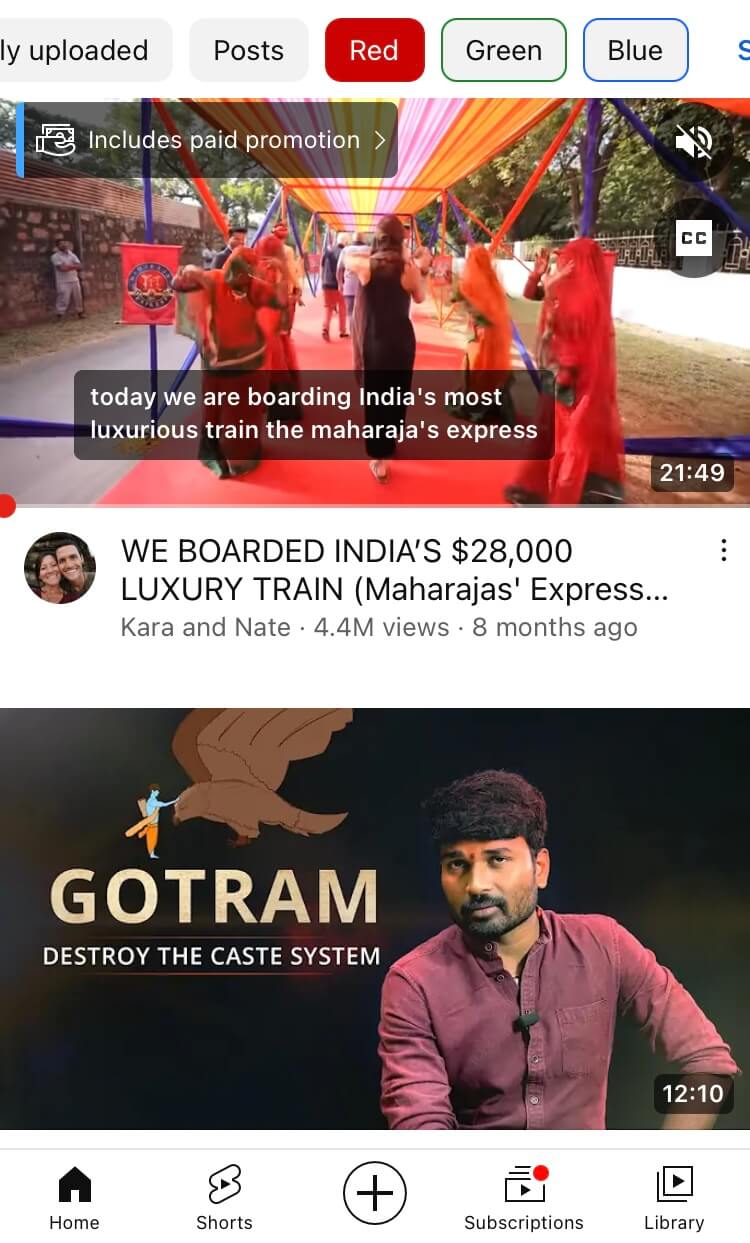
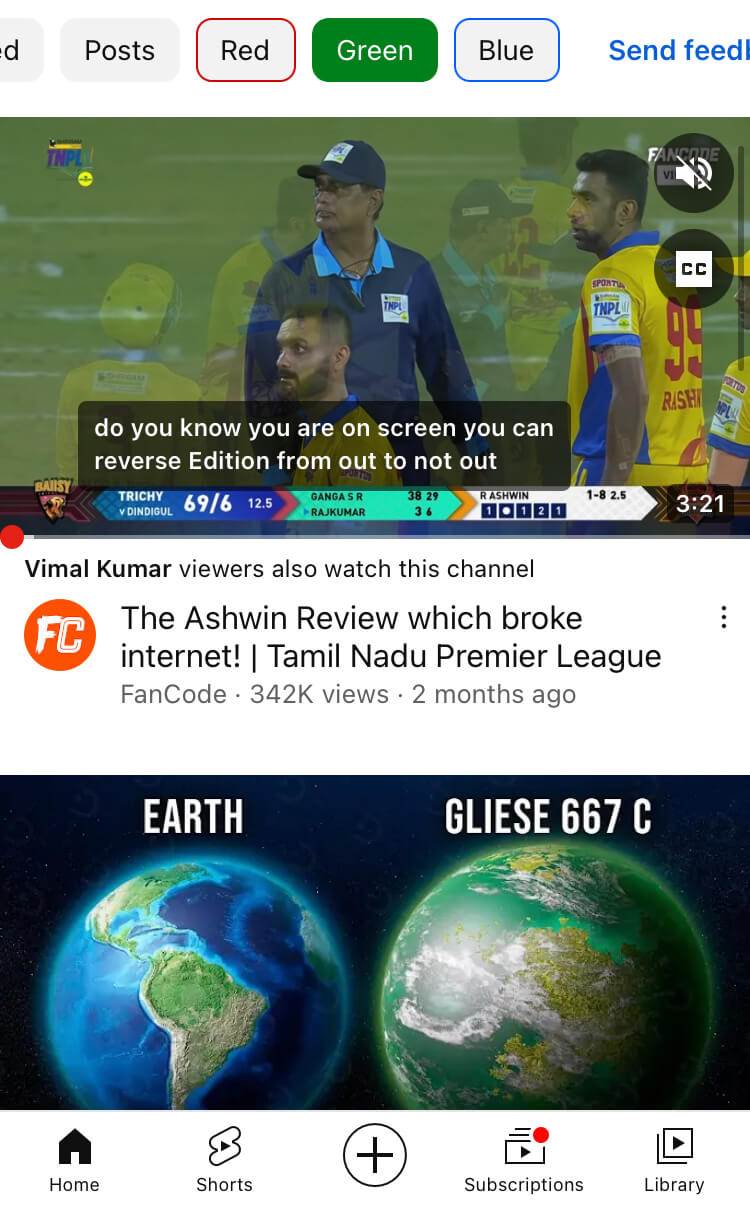
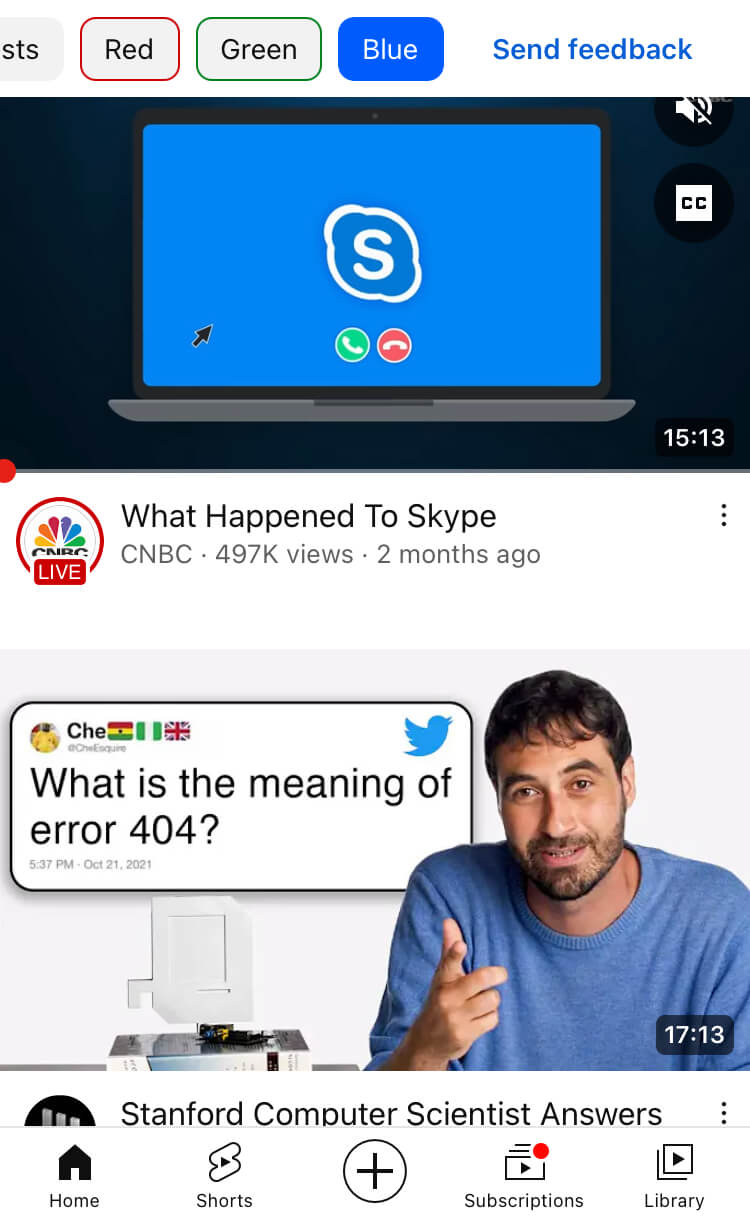
Highlight safety measures and sustainable practices in your travel marketing, as these have become critical concerns for travelers post-pandemic.
Take inspiration from our previous blog where we have discussed Innovative Travel Marketing Campaigns From Around The World.
In a bid to blindly replicate brand marketing successes on social media, many end up creating “self-congratulating” content.
Recreating trendy content give a false impression to the marketing team about better reach. The truth beholds, unless original thought is put to market product/service, the social media marketing will lead to poor brand awareness, let alone lead generation.
Also Read
Deciding How Often to Post on Social Media
How often should a travel brand post without overwhelming its audience? While there’s no universal formula, these platform-specific rhythms work well:
- Facebook: 3–4 posts a week. Prioritize quality—share destination stories, guest reviews, or travel tips that spark conversation.
- Instagram: 4–5 high-quality visuals or reels weekly. Consistency matters more than volume, so aim for steady inspiration.
- Twitter (X): Daily touchpoints. Quick tips, polls, or destination updates keep your brand visible in fast-moving feeds.
The key isn’t posting nonstop—it’s maintaining a rhythm that feels reliable, inspiring, and sustainable. A steady stream of valuable content builds loyalty far better than flooding feeds with filler.
Building a Consistent Brand Presence
Consistency is Key. Develop a content calendar to maintain a consistent posting schedule. Consistency helps keep your audience engaged and informed.
Share travel stories, itineraries, and personal experiences. Storytelling creates a deeper connection with your audience. Use live streaming feature to promote your brand often. Learn more tips on travel live streaming here.
You can use hashtag strategy to expand your content’s reach. Create a branded hashtag for your campaigns and encourage followers to use it.
However, we feel social media hashtags are overused. Hashtags are annoying and they hijack conversations. Moreover, users may relate social media posts with many hashtags as spam.,
Here is an interesting blog by Hannah Macready where she discusses the best use of hashtags for your social media campaigns in 2024 and beyond.
Also Read
Utilizing Paid Advertising
Partner with social media influencers who align with your brand and target audience. Influencers can provide authentic recommendations and reach new followers.
Look for long-term association with the right content creator on social media for consistent engagement of new and existing users. Influencer marketing tools like Ylytics, HypeAuditor, and others can help you find the right social media influencers.
How Travel Marketers Want People to Search on Google?

Enter a search query -> Your brand website ad appears -> Book your services
But How Do People Actually Search?
Enter a search query -> Google analyzes and displays results per keyword -> Visitor clicks -> Interrupted by WhatsApp chat -> Sleeps.
… a week later…
Notices a display ad from your brand -> Visits the landing page -> Bookmarks it -> Checks out the brand profile on Instagram -> Share it with spouse -> Logs out
… 2 days later in the office…
Visits your site -> Confirm their bookings.
Use paid advertising options on platforms like Facebook and Instagram to target specific demographics and promote your travel offerings. Consider retargeting ads to re-engage users who have shown interest in your travel products or services.
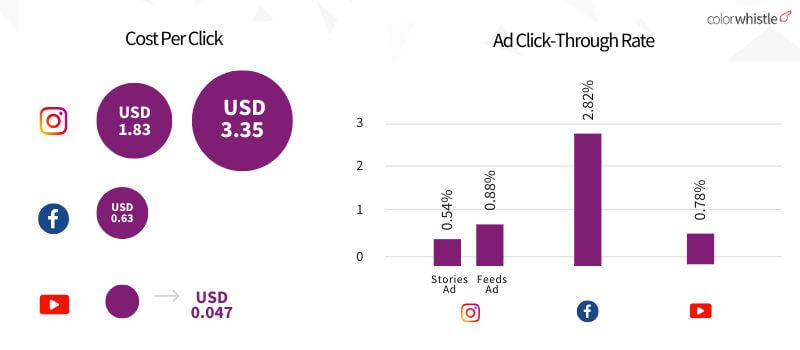
Use geo-targeting to reach users in specific locations, especially if you’re promoting local or regional travel experiences.
Also, read>> Facebook Ad formats
Also, read>> YouTube Ad formats
Also, read>> Instagram Ad formats
Outbound Engagement: Turning Social Buzz Into Bookings
If paid ads help convert browsers into buyers, outbound engagement is the spark that starts the conversation. Rather than waiting for likes and comments to roll in, proactive outreach lets your travel brand connect with high-intent prospects right where they’re already engaging.
Here’s how to make it work:
- Spot Warm Leads: Track hashtags, location tags, and forums where travelers share plans or ask questions. These are your best entry points.
- Join the Conversation: Comment with genuine tips or insights in Facebook groups, trending Twitter threads, or Instagram posts. Be helpful first, promotional later.
- Leverage Partnerships: Collaborate with travel influencers or bloggers via Lives, Q&As, or content swaps. Use tools like HypeAuditor to ensure their audience aligns with yours.
- Lead with Value: Share data-backed advice, safety updates, or insider travel hacks before making any offers. It positions you as a trusted guide.
- Build Communities: Stay active in niche groups or threads, not just when you want to sell. Consistency builds recognition and trust.
Track which interactions lead to bookings and refine your outreach templates to keep the tone approachable, not robotic. Done well, outbound engagement turns fleeting interactions into loyal travelers who return season after season.
Also Read
Monitoring and Analytics
Recommended Analytics Tools and Platforms
Measuring ROI in social media travel marketing starts with the right analytics. Most platforms now come with built-in tools that let you track reach, engagement, demographics, and content performance in just a few clicks.
Here are some go-to options:
- Meta Business Suite: Track Facebook and Instagram growth, engagement, and ad performance.
- LinkedIn Analytics: Gain insights into professional audiences, ideal if your agency also targets business travel.
- Twitter Analytics: Monitor follower trends, top-performing tweets, and audience behavior.
- Google Analytics: Connect social activity to website traffic and conversions, giving you the full funnel view.
If you’re juggling multiple platforms, tools like Hootsuite, Sprout Social, or Buffer can consolidate data into a single dashboard. This makes reporting easier and gives you a clearer picture of what’s really driving bookings and brand awareness.
Latest Trends in Social Media Travel Marketing
- Augmented Reality (AR) and Virtual Reality (VR) for immersive advertisements and travel previews.
- Live streaming for real-time travel experience.
- Showcasing eco-friendly destination and promoting responsible tourism.
- AI-powered chatbots and recommendation engines.
- Social commerce and booking directly on social media platforms.
VietJet Air is not afraid to experiment with new formats and strategies. For example, they recently launched an augmented reality (AR) campaign that allowed users to virtually experience their flights.
You can connect with us for more AI-related marketing solutions.
Case Studies: Success Stories in Social Media Travel Marketing
Let’s explore a few success stories in social media travel marketing through case studies. The selected case studies highlight how effective social media strategies can help travel brands engage their audience, encourage user-generated content, and create memorable and impactful marketing campaigns.
- Airbnb – #LiveThere Campaign
- Icelolly – Facebook Marketing Automation
- Royal Caribbean International – Targeted Ad Campaigns
- Expedia – #ThrowMeBack Campaign
Each campaign leveraged the power of storytelling, user participation, and visual content to connect with travelers and promote unique travel experiences.
1. Airbnb – #LiveThere Campaign:
Airbnb wanted to differentiate itself from traditional hotels and emphasize the idea of “living like a local” when traveling.
Social Media Strategies Implemented
- Launched a series of visually stunning Instagram and Facebook posts showcasing unique properties and travel experiences.
- Encouraged hosts and guests to share their stories, photos, and videos using the hashtag #LiveThere.
- Collaborated with travel influencers and celebrities to create authentic content.
Results and Outcomes
- The #LiveThere campaign garnered over 3.5 million Instagram mentions.
- Airbnb’s Instagram following grew by over 300% in a year.
- The campaign effectively communicated the brand’s message of unique and authentic travel experiences.
It may have worked for Airbnb back in 2017 but will be work for your travel business in 2024 and beyond? No one can be sure but you can surely take some inspirations out of it and improvize over it.
2. Icelolly – Facebook Marketing Automation:
Icelolly experienced a temporary decrease in conversion rates across their social media platforms. As a response, they incorporated the Facebook extension into their Engagement Cloud.
Social Media Strategies Implemented
- Implemented an omnichannel strategy to unify data from a single social media platform with the website.
- Delivered tailored ad notifications through social media feeds to individuals who have subscribed to destination price alerts.
Results and Outcomes
- Conversion rate was generated by 17% through Facebook
- Retargeting ads was increased up by 3%
- Open rate was generated by 35%
- CTR was increased by 201%
- Conversion was increased by 45%
3. Royal Caribbean International – Targeted Ad Campaigns:
Royal Caribbean International, a global cruise line, sought to increase engagement and conversions through its social media marketing efforts.
Social Media Strategies Implemented
- The cruise line implemented marketing automation tools to segment its social media audience based on factors like travel preferences and past interactions.
- They used automated chatbots to respond to common inquiries and facilitate booking processes on social platforms.
- They launched targeted ad campaigns on Facebook and Instagram, retargeting users who had shown interest in specific cruise itineraries.
Results and Outcomes
- Significantly improved response times and engagement on social media platforms.
- Enhanced conversion rates, with more users booking cruises directly through social media channels.
- Increased brand loyalty as travelers received personalized recommendations and timely responses to inquiries.
4. Expedia – #ThrowMeBack Campaign:
Expedia aimed to inspire travelers to relive their favorite travel memories.
Social Media Strategies Implemented
- Encouraged users to share their old travel photos with the hashtag #ThrowMeBack, along with a caption explaining the memory.
- Curated and featured some of the best user-submitted photos on Expedia’s social media accounts.
Results and Outcomes
- Over 15,000 users participated in the #ThrowMeBack campaign, sharing their travel memories.
- The campaign generated increased engagement and user interaction on Expedia’s social media platforms.
- It created a sense of nostalgia and encouraged travelers to book new trips to create more memories.
Also Read
Challenges and Pitfalls in Social Media Travel Marketing
Social media travel marketing offers significant opportunities, but it also comes with various challenges and potential pitfalls that marketers should be aware of, like
- Platform Algorithm Changes: Social media platforms frequently update their algorithms, affecting organic reach and engagement. Marketers need to adapt strategies to stay visible to their audience.
- Privacy and Data Protection: Stricter privacy regulations (e.g., GDPR) require marketers to handle user data responsibly. Mismanagement can lead to legal issues and reputational damage.
- Ad Saturation: Social media users may become overwhelmed with advertising, leading to ad fatigue. Marketers must strike a balance between promotion and providing value to the audience.
- Language and Cultural Sensitivity: Misinterpretations or insensitivity to local languages and cultures can lead to backlash. Marketers must research and tailor content appropriately for different regions.
- Changing Travel Behavior: Travel behaviors and preferences change over time, influenced by various factors like technology, health concerns, and economic conditions. Marketers need to stay updated and adapt accordingly.
- Over-Tourism Concerns: Social media can contribute to over-tourism by popularizing specific destinations or attractions, leading to overcrowding and environmental issues. Travel marketers must promote responsible tourism.
Hike Up Your Marketing Efforts with ColorWhistle
If your goal is to motivate shoppers, fans, and advocates through genuine content that has a track record of success, we are here to provide assistance.
ColorWhistle’s expert travel-focused designing and marketing assistance can boost your social media efforts. Further, our experienced digital marketing service team can elevate user experiences on multiple touchpoints. You can write to us or call us at +1 (210) 787 3600 anytime to enquire more.
Kindly leave your comments down below if you found the information in this blog useful and wish to learn more
What’s Next?
Now that you’ve had the chance to explore our blog, it’s time to take the next step and see what opportunities await!

